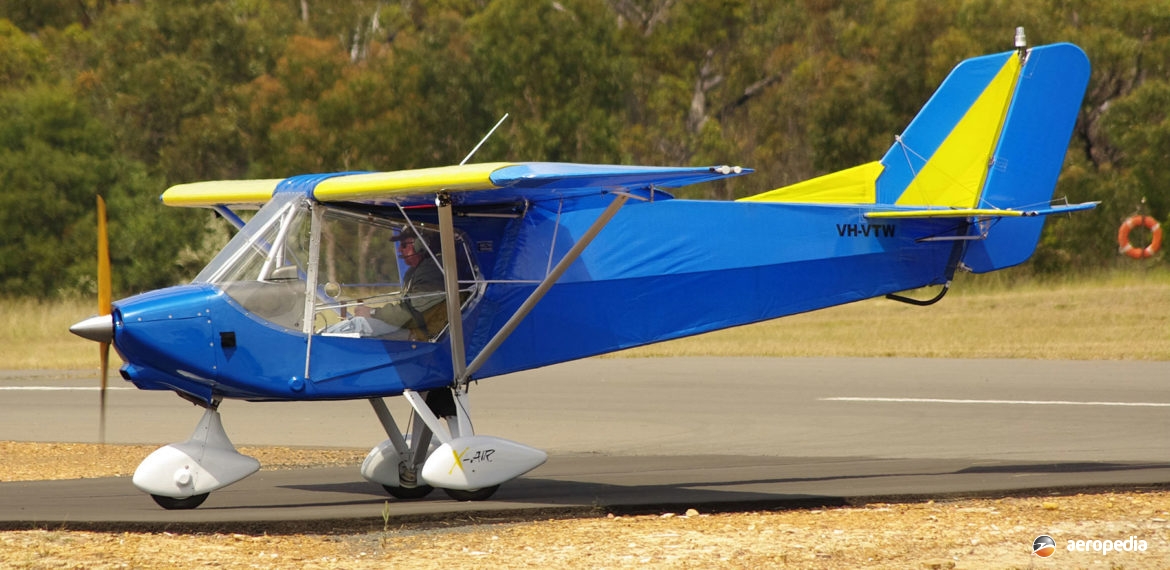Photograph:
Raj Hamsa Hanuman VH-VTW (c/n 1204) at Wedderburn, NSW in November 2012 (David C Eyre)
Country of origin:
India
Description:
Two-seat light sport aircraft
Power Plant:
One 60 kw (80 hp) Jabiru 2200 four-cylinder horizontally-opposed air-cooled engine
Specifications:
- Wingspan: 10.05 m (32 ft)
- Length: 6.09 m (20 ft)
- Height: 2.3 m (7 ft 6 in)
- Wing area: 13.92 m² (147 sq ft)
- Max speed: 169 km/h (105 mph)
- Cruising speed at 75% power: 150 km/h (93 mph)
- Stalling speed no flaps: 63 km/h (39 mph)
- Stalling speed with 45 degrees flaps: 53 km/h (33 mph)
- Service ceiling: 3,962 m (13,000 ft)
- Rate of climb: 287 m/min (950 ft/min)
- Take-off run: 80 m (260 ft)
- Landing run: 70 m (227 ft)
- Fuel capacity: 80 litres (20.5 imp gals)
- Empty weight: 263 kg (578 lb)
- Loaded weight: 450 kg (992 lb)
History:
The Hanuman is one of a series of light sporting aircraft produced in India by Raj Hamsa, this machine being designed to accept a large range of engines to meet customer needs, these including the Jabiru 2200, Rotax 912, Rotax 914 and Hirth series of four-cylinder units.
The Hanuman is a three-axis aircraft with a conventional tractor mounted engine and is provided in kit form to the amateur constructor. The aircraft is of conventional welded steel tube construction with fabric covering. Fitted with a tricycle undercarriage, it is described as a stable aircraft good for training and has dual control sticks, rudder and throttles. The wings are able to be folded for storage. First examples in this region were registered with the RAA in early 2007, one example becoming 19-4487, this being fitted with a 2200 cc Jabiru engine. It was followed by 19-4166 and 24-7033. An example became ZK-JDY (c/n 1034) in New Zealand in late 2008.

